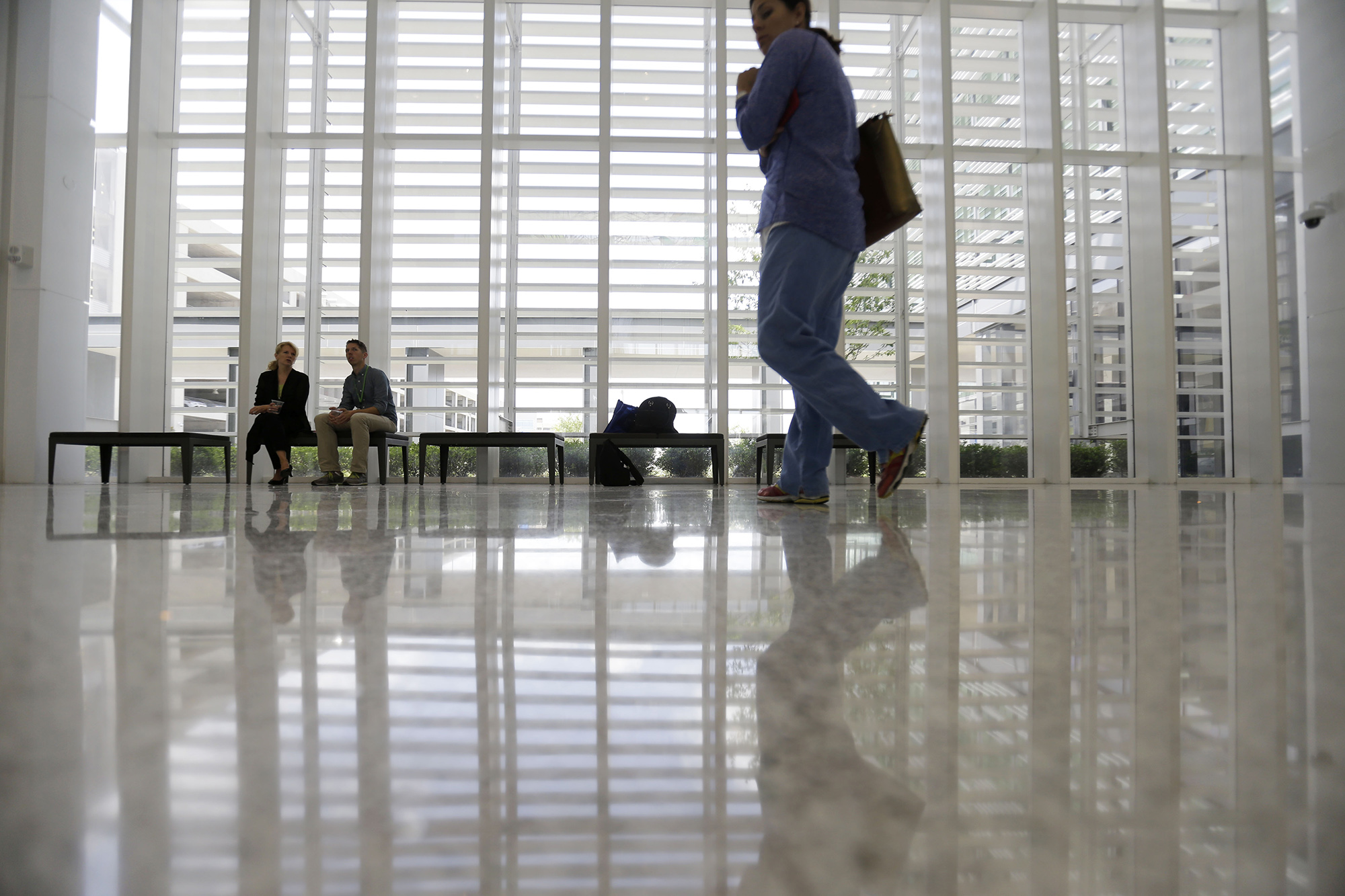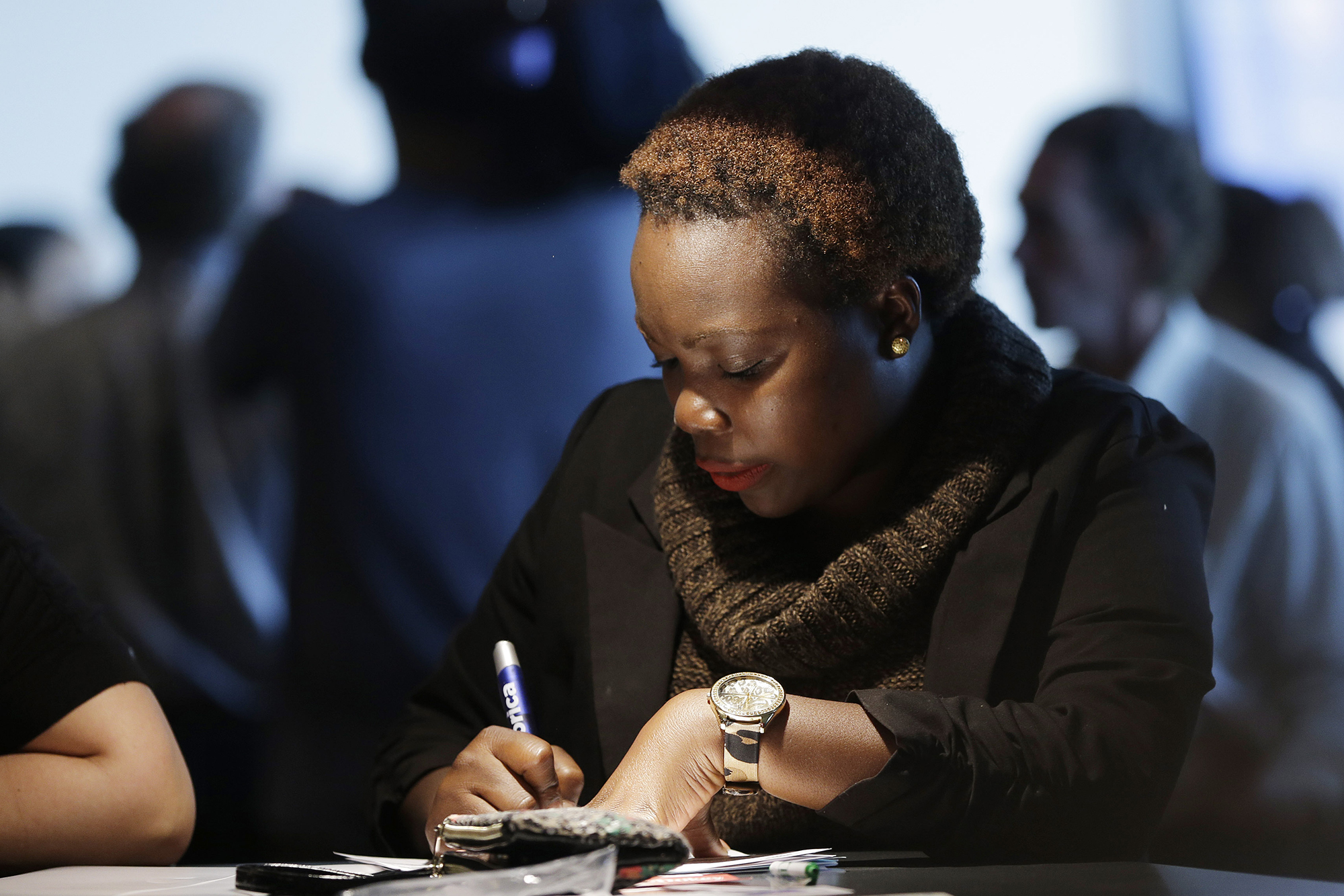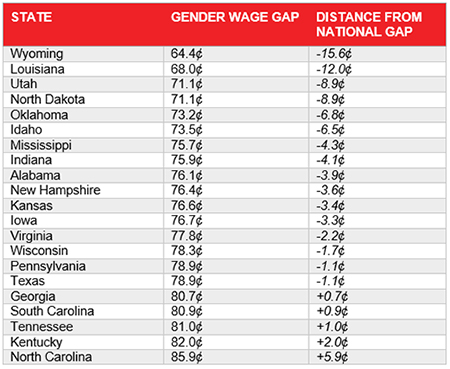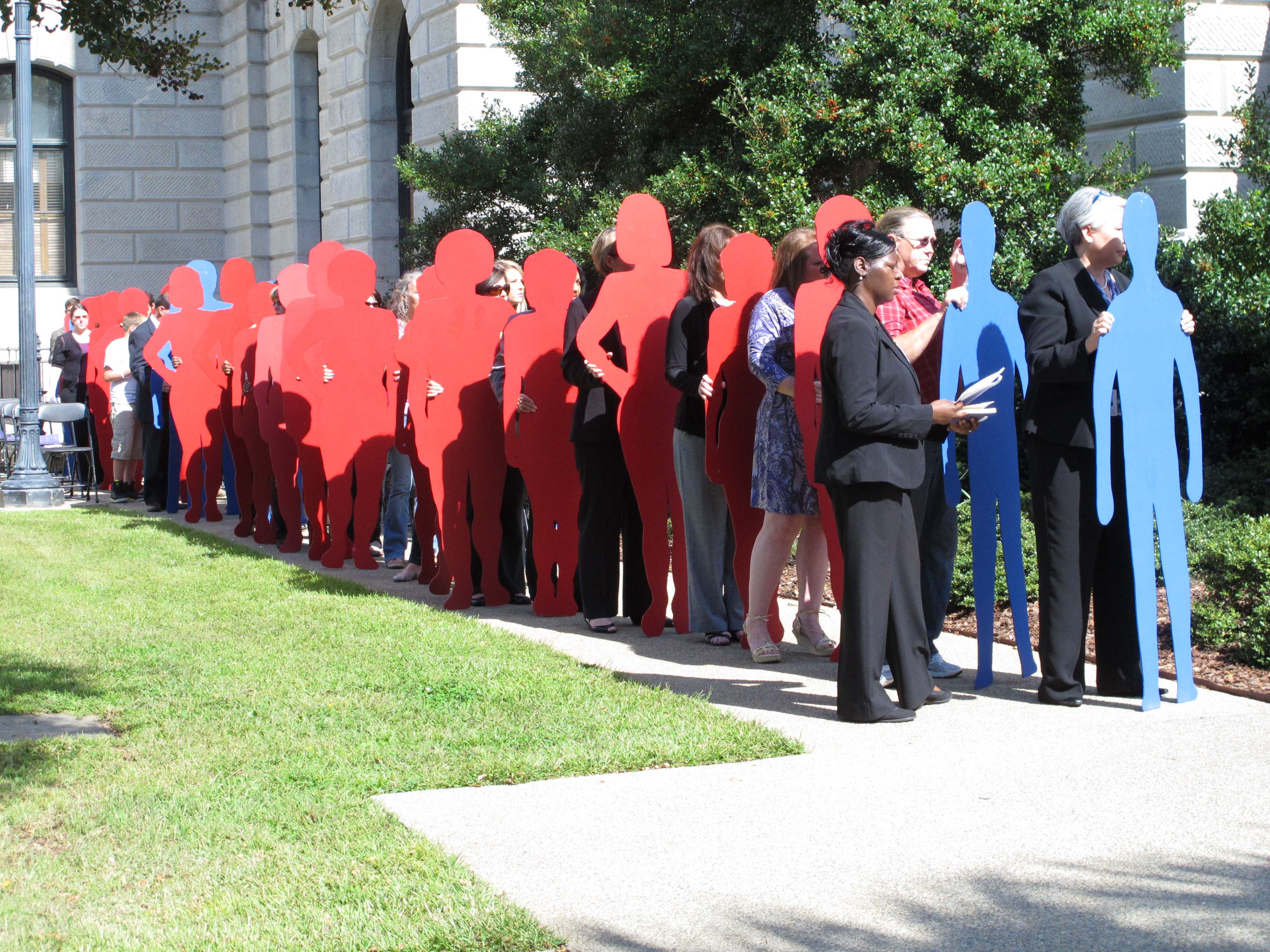
A woman walks in front of the main lobby of the University Medical Center New Orleans, during a media tour in New Orleans, Wednesday, June 17, 2015. Building the $1 billion medical complex has come about despite a yearslong fight over the extent of hurricane damage to the city's old Charity Hospital, fights over the razing of a neighborhood where the new hospital was to be built and over the objections of many in the medical community. (AP Photo/Gerald Herbert)
In August 2015, New Orleans’ University Medical Center opened its doors for its first patient. Before being damaged in Hurricane Katrina, it had been known as Charity Hospital—a place where all of the city’s residents could seek care regardless of ability to pay. But after the storm, the entire Charity health care system—the only state-run, state-wide public hospital system in the U.S.—was disassembled in favor of a system of privately run hospitals. This rapid move toward privatization has come to define the post-disaster city.
Although more than a decade has passed since Hurricane Katrina hit the Gulf Coast, there is a stark discrepancy between those who can access the resources they need to rebuild their communities—the relatively affluent—and those who cannot. This has been fueled in large part by a market-based approach to recovery, which considers economic recovery more important than restoring social services. And when privatization comes at the expense of public goods, it’s the poor who pay the price.
Get TalkPoverty In Your Inbox
For example, the Department of Housing and Urban Development’s rebuilding program paid homeowners based on the market value of their houses rather than on the cost of repair. This left many black working-class homeowners unable to rebuild their homes, because they lived in areas with lower market values—a result, in part, of discrimination past and present. The limited resources to rebuild, combined with the dramatic reduction in public housing—many large public housing developments were shuttered—have fueled the city’s affordable housing crisis.
Public schools met a similar fate. After the storm the city eliminated jobs for 7,000 teachers, who were dismissed without pay. The city also began moving towards a charter-based school system—a model based on market-driven ideas of choice, efficiency, lack of centralized oversight, and limited union control. This switch pushed many of the city’s most disadvantaged students out of high performing schools through a process known as “creaming” that is designed to inflate test scores.
The force of a global economy
Why has funding for disaster recovery shifted away from supporting citizens’ and communities’ needs, and towards models that favor privatization of public services? The answer lies in the shifting nature of the global economy.
Beginning in the 1970s, the deregulation of finance, transportation, and the environment—as well as the loosening of trade barriers—increased the flow of goods and jobs across national borders. This shifted manufacturing out of the U.S., and created pressure to compete globally for ports, shipping, finance centers, and tourism, as well as other high-end service industries such as the medical industry—areas in which New Orleans has historically played a significant role.
This shift happened on a city level too, and it fundamentally changed the relationship between local governments and their citizens. Governments have moved from public management to entrepreneurship, with an emphasis on increasing the economic standing of their city. Since the focus following a disaster is on restoring economic growth, the decision-making process for post-disaster cities—such as New Orleans after Hurricane Katrina or the greater New York region after Hurricane Sandy—often increases inequality of access and delivery to much needed public services, such as health care, affordable subsidized housing, and public schools.
A vulnerable health care system
In New Orleans, the health care system is perhaps one of the clearest examples of how this harms the city’s poorest residents. As the main trauma hospital, New Orleans Charity Hospital should have been a key component in recovery efforts. Though it was damaged during the storm, the National Guard had cleaned and restored the hospital so that it was able to receive patients within a few weeks. However, state and local officials chose to keep it shuttered. Instead, they opened an interim hospital and continued with plans to build a new hospital complex that would require razing nearly 70 acres of a national historic district.
For state officials, Hurricane Katrina presented an opportunity. As early as 1991, a strategic plan from the Louisiana Health Care Authority showed that officials who oversaw the state hospital system had been looking for ways to get out of the business of “charity,” and to move away from the two-tiered system that left the Charity hospitals serving most of the state’s uninsured. This was raised again in the early 2000s after Louisiana State University took over management of the hospital, when a report commissioned by LSU argued that the proportion of low income patients the hospital was serving was hampering its financial stability. But as long as Charity Hospital remained open and serving predominantly indigent patients, it would be hard to justify the expense of constructing a new building.
The damage sustained during Katrina provided the justification and funds for a new building with a new name. This was shown most pointedly in the fight over FEMA funds to repair the hospital—FEMA initially estimated repairs would cost $23 million, but the state and LSU fought for nearly $500 million to fund the hospital’s full replacement. When asked for comment, representatives from LSU said “planning for a replacement hospital was well underway with appropriated state funding from the Louisiana Legislature.” LSU had received $1.8 million for a master plan study in 2003 and was seeking funding for a move before Katrina. But even after Katrina, the state only offered $300 million towards construction of the 1.2 billion dollar hospital.
For ten years, Charity Hospital remained shuttered while the new building, now renamed University Medical Center, was constructed. Officials hoped to build a public-private partnered “destination” hospital that would be the lynchpin in the larger effort to transform the medical corridor into an economic engine for the city, though a leaked draft study challenged the hospital’s financial footing, particularly in light of the changing federal health care rules. This same report did note the successful effort to rebrand the hospital.
In the meantime, the city suffered the gutting of a trauma center and psychiatric care facility after one of the most traumatic social disasters. Psychiatric patients who had been served at Charity ended up in the local jail— notorious for human rights abuses—in higher rates. When community members questioned why Charity could not be reopened to serve the population as a hospital for the future (at meetings the author attended in Spring of 2011 on Charity’s reuse, as well as meetings on the process of expropriating houses in the new hospital’s footprint)—as a study suggested could be done for a much lower cost—board members replied that the Charity facility “does not meet the programmatic requirements for the LSU hospital moving forward.” LSU declined to comment on this conversation, but stated that “it was well documented that Charity Hospital was no longer an appropriate building for health care.”
Remaking our cities
It’s worth asking: In what image are cities remade after disasters? Public schools and the Charity system were in need of funds and a system-wide overhaul before the storm, but a narrow view of how to fix these pre-existing problems moved both towards privatization.
Much of the national conversation after Hurricane Katrina focused on the inequalities of class and race that made New Orleanians vulnerable before the storm. But throughout the recovery effort that vulnerability has not changed for many of the city’s poorest—a particularly dangerous risk as cities face more disasters, more often, as a result of climate change. Shifts in formerly public institutions often to private and non-profit oversight did not increase access as much as they removed decision-making from public oversight, and changed the nature of public participation in these key institutions.
If cities are going to be prepared for the future and foster sustainable communities, they should seriously question whether a healthy business environment is more important that the health of its citizens. Now, Louisiana is faced yet again with another long recovery from massive flooding. It also has new leadership, which has placed the health care of its citizens as a primary concern. Hopefully, we will see something new emerge from the waters.












